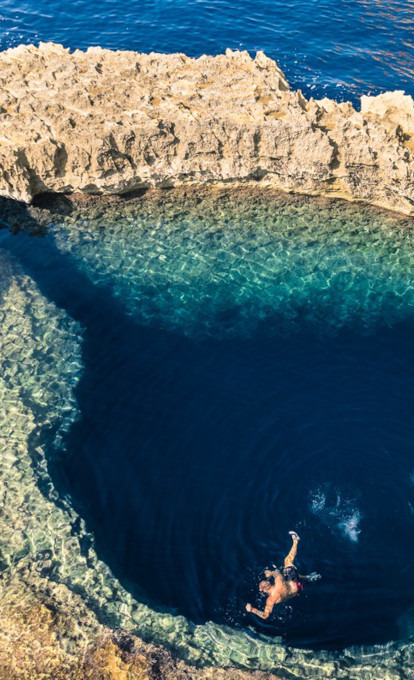Malta may be small, but it’s certainly mighty. With a Mediterranean climate of hot dry summers and mild winters, it can be enjoyed pretty much all year round. Home to sheltered bays (perfect for snoozing under), limestone cliffs (perfect for scrambling up) and more caves, crags and wrecks than even a Disney animator could concoct, Malta is a country of astounding intensity. And we haven’t even touched on its mammoth temples and 5,000-year-old necropolis yet. Come in July and you’ll be treated to pulse-pumping sets from some of the world’s biggest DJs, while in March, April and May it’s all about fresh air thrills in the form of swimming, hiking, running and mountain biking. So really, the only thing you need to think about when planning a holiday to Malta is what kind of trip you want…
December – February
This may not be the time to swim but there’s still the opportunity to enjoy a slice of winter sun. Take advantage of the few queues spouting from the archipelago’s main cultural highlights and get toe tapping with Maltese locals at capital’s annual Baroque Festival and Il Karnival ta’ Malta. It is worthwhile noting that January is the coolest month of the year with a daily maximum average of 15°C and low of 9°C. But surely with all the partying you’ll be encouraged to partake in, you’ll barely notice.
March – May
March’s Malta Marathon signals the start of the archipelago’s active season. With rainfall dwindling to 2.5mm and temperatures rising to 14°C in March and 20°C in May spring is the perfect time to set your sights on Malta’s coastal walks in the Park tal-Majjistral. Watch waves crash against limestone cliffs and Mediterranean chameleons scurry for shelter. Or join in on the Easter fun at processions and firework festivals. If you’re after a cheaper retreat, visit the country in May, when temperatures are known to reach 23°C and sunlight hangs around for around ten hours a day. Galleries are quiet, ancient sites are empty and music festivals feel like they are reserved for locals only.
June – September
From June to September, it’s all about DJs and dance moves. And thanks to its daily average maximum of 32°C, there is probably little else you’ll want to do anyway. Lap up July’s obsolete 0.1mm rainfall at boat parties and music festivals such as Malta Jazz Festival and Isle of MTV and reset on the buttery beaches of Malta and Gozo. If you’re wanting to mix up techno with tradition, head inland to village festas (feasts) for spellbinding showcases of authentic Maltese culture.
October – November
As autumn descends on the island, so does a carpet of green, which makes the island feel even more inviting. Fall for the season’s promise of fewer crowds and cheaper accommodation, as well as its myriad celebrations ranging from the Malta Book Festival and Mdina Cathedral Contemporary Art Biennale to the Malta Classic (Mdina Grand Prix) in October. Temperatures hover around 21°C with rainfall lingering for just one day out of four.














